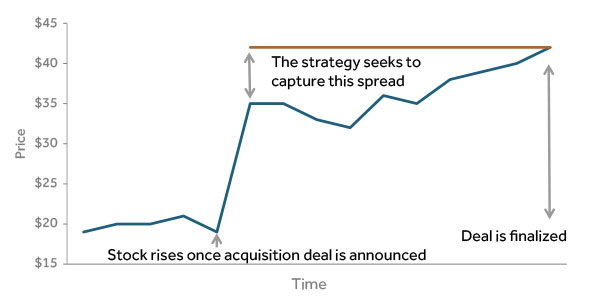
Slicing Up the Pie
Sources of return that can be identified, have an economic reason for existing, and can be systematically accessed are often called risk premia, risk factors, factors, or betas. Generally, each of these terms refer to the same thing, but I will stick with risk premia. A risk premium is the compensation an investor gets for taking on some specific type of risk. When you purchase car insurance for your car, you pay a risk premium to the insurance company to accept the risk that something could damage the car. Similarly, any time that an investor takes on more risk in some way, that investor wants to be compensated for that extra risk. Equities generally return more than bonds because equities have more inherent risk than most bonds. Corporate bonds return more than U.S. Treasuries because those corporate bonds have more inherent risk than U.S. Treasuries.
In the investment industry, earning a risk premium is not a new concept. In the fixed income space, credit risk (the chance of the borrower defaulting) and time are traditional risk premia that have been identified for a long time. Similarly, in the equity space, William Sharpe identified the general long-only stock market return as the risk premium that is earned for taking on the additional risk of owning equities versus a risk-free return.
What is relatively new to the industry, is our understanding of and access to risk premia beyond those traditional ones – the alternative risk premia.
Hedge Funds’ Unhidden Treasure
Alternative risk premia describe a class of risk premia that are not included in the traditional risk premia, and are often associated with hedge fund strategies. I cannot give an exhaustive list of the alternative risk premia that have been identified, but below is a sampling of what used to be considered manager skill that we now identify as risk premia.
- The Value Premium – this is the risk premium associated with securities that are currently cheaper than their peers from a valuation standpoint. The rationale behind it – if you purchase assets that are cheap relative to peers, those assets will outperform those peers until they catch up.
- The Momentum Premium – this is the risk premium associated with the purchase of securities that are rising in price. This is also commonly referred to as trend following.
- The Carry Premium – this is the risk premium associated with taking advantage of higher yielding assets over lower yielding assets of the same quality. For example, if German Bunds yield less than U.S. Treasuries of the same term, you could sell the Bunds and purchase U.S. Treasuries.
- The Quality Premium – this is the risk premium associated with the purchase of securities issued by companies with low debt, stable high-quality earnings, and good management. Over time, these companies are expected to do better than others, which do not have those characteristics.
- The Size Premium – this is the risk premium associated with the purchase of lower market capitalization companies’ securities. Lower market capitalization companies often have more risk associated with them because of their size, so investors demand higher returns for taking on that risk.
- Event-Driven Premia – these are the risk premia associated with investing based on some corporate event, such as bankruptcy, a spinoff, or merger. Event premia are often more specific than the other risk premia discussed, and depend on which type of event is being captured.
How It Works
One type of event-driven risk premium available is called merger arbitrage. In a merger arbitrage strategy, the investor is purchasing the company that is going to be acquired and in some cases selling the company that is acquiring it. Most of the time, acquirers purchase companies for more than the current price of the stock. When a deal is announced, the price of the company to be acquired will rise to almost the price implied by the deal. It does not usually rise to the exact offer price because there is a chance the deal won’t go through. A merger arbitrage strategy purchases stock in the company to be acquired with the expectation that the deal will go through. The risk premium can be further targeted by selling the acquiring company short (borrowing shares to sell in the market to repurchase later), which isolates the return just associated with the deal closing. Repeated across many such deals and multiple times per year (many deals take less than a year from announcement to close), this can be a source of return even in difficult market environments.

Source: IndexIQ. For illustrative purposes only, based on hypothetical events of a merger/acquisition.
Conclusion
Alternative risk premia are a potentially useful exposure to include when designing an optimal portfolio. These risk premia often, according to academic and industry papers, exhibit low or slightly negative correlations to the broader stock market. Harvesting these risk premia can, therefore, improve portfolio return, increase portfolio diversification, or both. Our team’s analysis focuses on finding a vehicle that properly captures well-established, persistent risk premia with a minimum of implementation slippage, in a low-cost way. In short, we endeavor to provide the right exposures for our clients needs and unique circumstances.
Vinay Sharma, CFA®
Senior Investment Analyst
1/3/18






